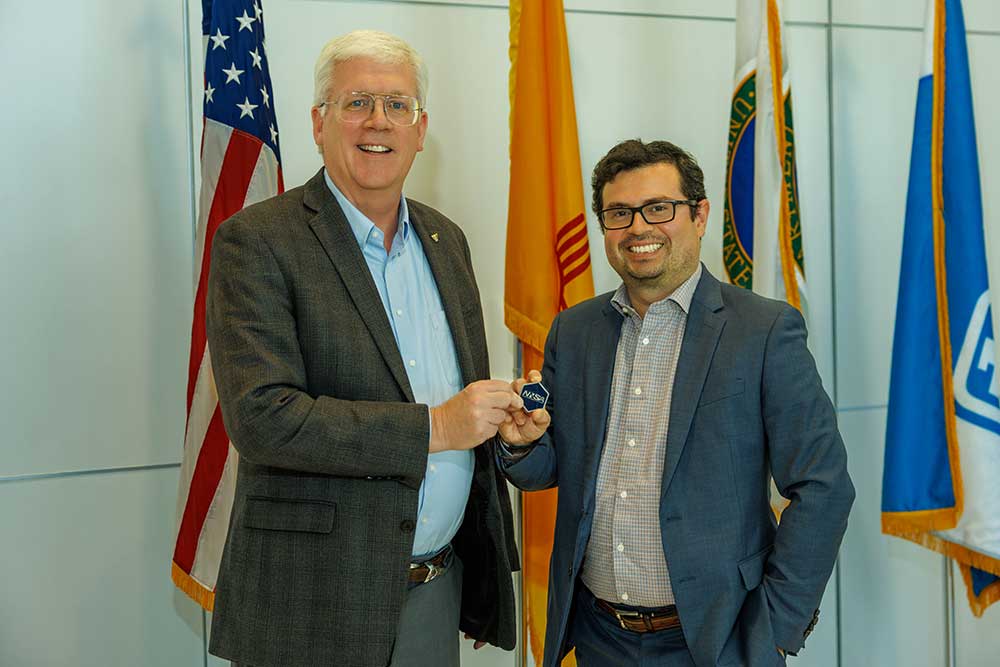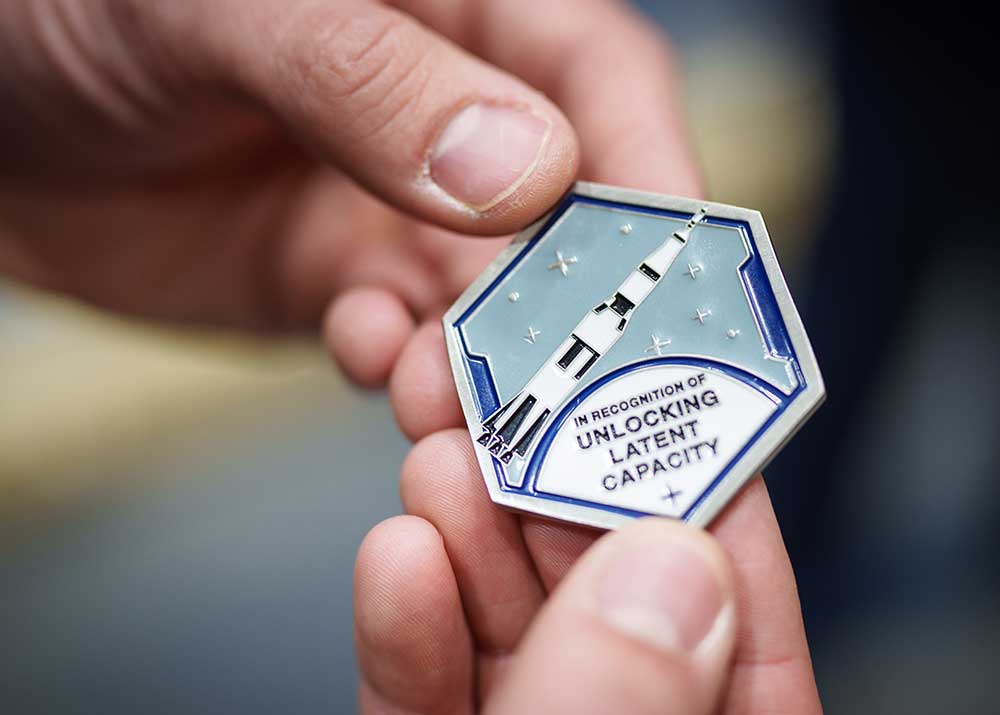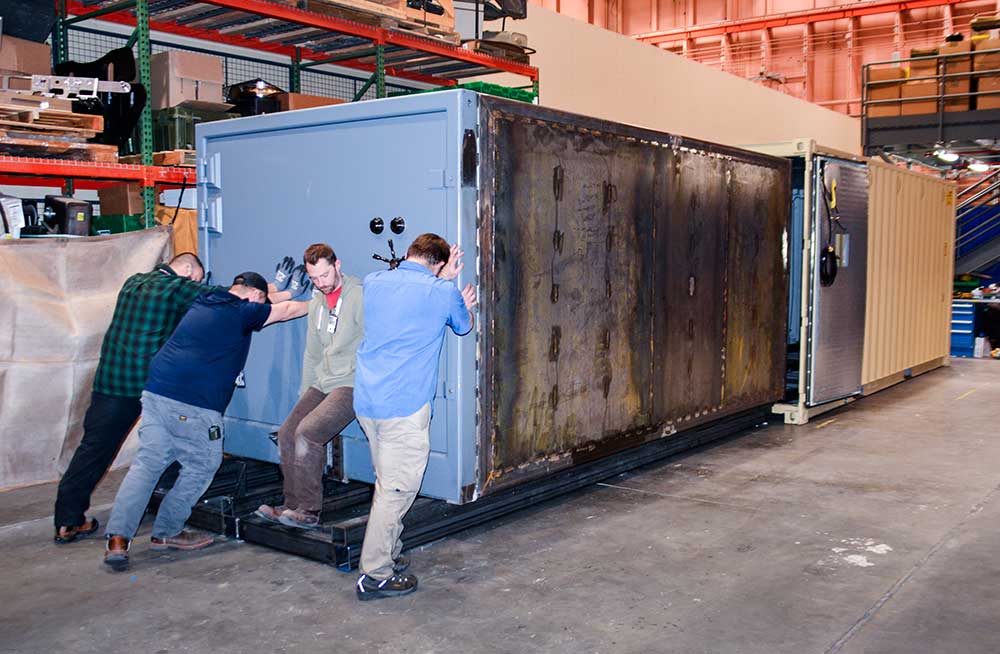
Bernardo Diaz has been part of a few big changes.
He and his team from Sandia’s International Security and Risk Management were recognized by NNSA on March 12 for improvements that make it faster and easier for Sandians and other nuclear security enterprise contractors to travel to foreign nations on behalf of NNSA and other U.S. government agencies.
“Thousands of travelers will benefit from these improvements, enabling us to more effectively accomplish NNSA’s mission with our international partners,” said NNSA Sandia Field Office Manager Daryl Hauck, who presented Bernardo an NNSA Enhanced Mission Delivery Initiative coin in appreciation of his effort to help nuclear security enterprise processes move quicker and more efficiently. “He showed persistence in making it happen. He didn’t take no for an answer.”

NNSA’s Enhanced Mission Delivery Initiative aims to improve efficiency, productivity and collaboration across the nuclear security enterprise.
Bernardo worked with NNSA officials to reduce the number of approvals needed for these types of trips.
“I know what a pain it is to cut red tape,” he said. “I think my previous experience told me, ‘We can change it.’”
Bernardo’s “previous experience” includes reestablishing U.S. diplomatic relations with Cuba.
Havana was his first assignment as a diplomat for the U.S. Department of State. Diplomatic relations between the two countries were severed in 1961 and remained so when Bernardo arrived in 2014.
“It was a hardship post,” said Bernardo, who moved there with his wife and dog. “The Cuban people are incredible, but the work was hard. The country was stuck in the 1950s. Not much has progressed in terms of infrastructure.”
Bucking 70 years of history, Bernardo was part of the team that carried this international effort across the finish line. The Department of State Superior Honor Award hangs in his Sandia office, recognizing his “Outstanding sustained performance and significant contribution in support of diplomatic relations between the United States and Cuba.”
Years later, Veronica Robles, a member of his staff who helped lead the project, credited Bernardo with driving the improvement in the travel process.
“Bernardo really took the time,” Veronica said. “Our travelers go through a lot. The biggest thing I always go back to is to reduce the human stress of it all. How can we make it a little bit better? How do we get them out the door to do that mission work?”
“This award is satisfaction we’re doing what’s right to serve the mission,” Bernardo said.

